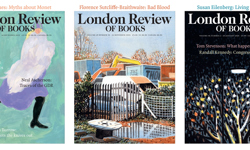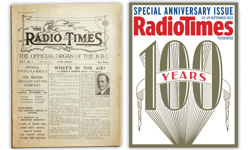It’s not unusual to hear publishers talking up the value of their digital ventures, yet it’s rare to find one who is simultaneously bullish about investing in new media platforms and expanding their range of print products. Damian Butt, managing director at Imagine Publishing, insists that growth across both print and digital platforms is essential to the continued strength of the company.
Imagine offers every title on every digital platform, using its in-house software to deploy its content in multiple formats – not just iOS and Android - at very little extra cost. “You always have to pay the platform holders a share of the revenues but aside from that, this technology allowed us to move very, very quickly and without additional overhead,” Butt says.
“The thing is you never know which one is going to be the next big thing, you’ve got to be in it to win it, so we’ve supported a lot of (platforms) along the way, some of which have grown significantly, and some of them have carried on but just not set the world on fire. There’s lots to try, there are emergent ones all the time; wherever it’s cool and there are engaged readers who really want to consume the sort of information we provide, we want to be there.”
Butt is steadfastly loyal to the value of print to the portfolio, despite declining sales for the industry and consumers’ changing reading habits. “We are huge fans of print, we’re still massively passionate about that format and, in fact, we sell more printed products now than we ever have done. We’ve got a lot of knowledge titles and technology titles, and the sort of content we produce tends not to date … I think a lot of our readers enjoy collecting the magazines and bookazines; they hang on to them and refer to them. So, despite all of that digital excitement, print is still very strong for us, and increasingly so.”
Paying for quality
The company’s bookazine format, which won the WHSmith Innovation award when it first launched, and is now used to publish specialist spin-offs from across its magazine range, is expanding. Imagine produces more than 250 bookazines a year, many of them in overseas markets. In the US, Butt says 25 per cent of the value of newsstands is bookazines – a format that didn’t exist there at all five years ago. Imagine is now expanding the bookazine market in other countries – including India, a market with huge demand for English-language educational material.
Bookazines spur interest online and in magazines, and vice versa, says Butt. “It works every which way. We’ve had people who’ve been introduced to the regular magazine through the bookazine, which maybe they’ve found in areas where the magazine wasn’t stocked. We’ve also had a large number of our readers who enjoy the monthly magazine and subscribe to it and they like to consume the bookazine format as well. And we’ve got people who only enjoy the bookazine. One of the great things about being in publishing and creating quality content is that we don’t mind where people come across our titles, as long as they do, they’re prepared to pay for them, and they come back for more.”
That preparedness to pay is crucial to Imagine. The company charges premium prices for its print products, and digital content is all paid-for and profitable. Butt says it proves that consumers value quality content. Less than ten per cent of revenue comes from advertising. “There are digital samplers that allow people to see what sort of content it is, but our entire strategy has been that we’ll produce high-quality products that people can pay for, because we don’t want to devalue the quality of that content by getting into the free game.”
Overseas markets
Expansion abroad has been a hands-on exercise. “With India, as with America actually and all the markets we’ve been successful in, it massively helps to visit the territory, meet the people and see it on the ground,” Butt says. “That’s something that a lot of companies don’t always do and we continually meet companies that say they’ve never been visited by anyone else, they’ve never seen a publisher from the UK. It’s about visiting and forging those personal relationships with like-minded companies, and having a great product to bring to that country.” Some foreign-language titles, which are broadly translations of the English version, but augmented with local content, are produced under licence. “(Content) does vary by territory, but the desire to learn more and improve yourself and your family is, I think, universal.” Imagine recently appointed James Hanbury as chairman, bringing his experience of launches in Asia from his time as co-founder and group managing director at Incisive Media.
Butt hopes to be able to beat the red tape and launch in mainland China before too long. “The moment I saw How it Works in Taiwan was a massive moment, because it’s a language you recognise so well and it represents opportunity and potential scale and excitement. It’s incredibly exhilarating. I’m really fired up now for a full-on Chinese launch, hopefully that’s something we’re going to achieve in 2015. The downside is you do have to work in a certain way to be able to publish in that territory but that’s just something that can be overcome and I think the products should speak for themselves and should open some doors.”
Riding the cycles
Along with the many magazine success stories Imagine has had are stories of closures. Butt says a constant refreshing of time and trend-sensitive titles is essential, and good for the business. “There are always closures; it’s the natural life cycle of titles,” he says. “For us, it tends to be less that a title has failed – it’s been the natural life cycle of that topic. The Nintendo Wii device is a good example of where there’ll be a fantastic amount of hype pre-launch, we launch a magazine to support it and it will take off, and then that piece of hardware itself doesn’t set the world alight, or isn’t appropriate for a magazine, and we therefore ride that life cycle for as long as we’re able to.
“We tend to be able to get in more quickly than other companies, stay in longer, but you have to accept that technologies will rise and fall. The benefit of our model is that because there’s always exciting new technology being launched, you end up with a sort of gradual upward curve because you have some in decline but you have lots of new ones in the ascendant. So, as long as we stay focused on the most exciting tech and we remain nimble, then we stay ahead of the game.
“A lot of our titles have now been ten-plus years in publication, but launches are the lifeblood of the company and right now, because of the economic situation, there’s an awful lot of acquisition opportunity with companies which can’t seem to publish effectively in the current climate.”
As the company enters its tenth year in business, it is working on a soon-to-be-launched digital idea it hopes will be “truly inspirational”. That remains under wraps for now, and expansion continues in print and existing digital platforms. Technology has been the company’s lifeblood, but the knowledge and education part of the business is on the rise.
“We’ve recently acquired a magazine called History of War in the knowledge-education sector; that’s going to be a fantastic title for us in 2015,” says Butt. “There’s a phenomenal number of opportunities for titles that either don’t make money for the current publisher or don’t make enough, and that we can exploit using our publishing model to really take worldwide. I wouldn’t say we’d go too far from our heartland, but one thing that we do use is our bookazine portfolio to test markets and see what the appeal is, and sometimes that leads on to full magazine launches or acquisitions.
“One of the reasons why the knowledge-education sector is so exciting is that content really is content that lasts forever, so although our heartland is tech, titles such as How it Works or All About History or All about Space or World of Animals, not only provide fantastic content but fantastic content forever, and that’s why it’s our fastest-growing division and I think it will soon be our biggest division, because those areas are building sustainable magazines that have life cycles of 25 years.”
Life’s a beach
Butt says the greatest struggle for the company is to challenge retailers’ perceptions of the value of magazines, and maintain the shelf space and prominence that retailers are prepared to give the printed word. It’s not all hard work, though. The company is based in Bournemouth, on the south coast of England, a magnet for families and people who appreciate the relaxed lifestyle in the area.
“One of the benefits of starting a business from scratch is that you can make up the rules, and one of the rules we set from the start was that we didn’t want anyone working Friday afternoons – we wanted them to be able to go out, relax, enjoy the beach, think of new ideas and come back Monday morning refreshed and just, generally, we didn’t get into that whole grind of publishing; we wanted to make sure they could really appreciate the area,” says Butt. “There’s seven miles of golden sands here; what’s the point of that if you’re just stuck in the office working to deadlines? We wanted to really encourage a strong work ethic, which we’ve absolutely got, but also allow them to have some play time.”
Imagine Publishing
Company launched in: 2005
Managing director: Damian Butt
Publications include: How It Works, All About History, 3D Artist and Digital Photographer
Newest title: How It Works Chinese edition, launched in Taiwan
Number of staff: 150
Annual revenues of £18.5 million in 2013












